Proofs and Printed Cumulative Layers
It is not the intention of this post to delve into the different printing methods that are used to create plates for printing, nor the different methods of getting the ink from the plate to the paper. I might do that in another post sometime in the future though. Rather, I wanted to show the printing process with 4 x colour overlays on an actual stamp. The stamp used for this post is a 1959 U.S. Christmas Seal, which was also sold in the Philippines in the same year. Why this stamp? Simple – it was the best examples from my collection where I have all colour print stages available (known as proofs).
These particular stamps were printed in sheet of 10×10 stamps, giving 100 stamps per sheet in total. In the example below I will show a block of 2×2 stamps. The image on the left shows and individual color proof, the image on the right shows a cumulative view of all previous layers combined with the current layer.
| Printed Layer | Cumulative Printing Result |
|---|---|
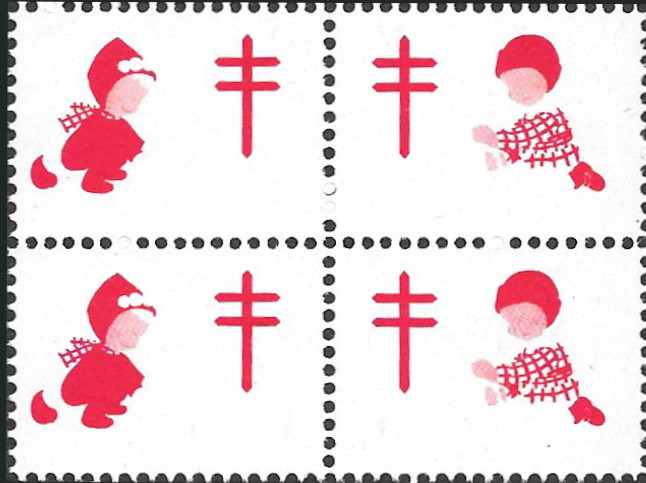 Red Ink applied in first run |  First layer in red only |
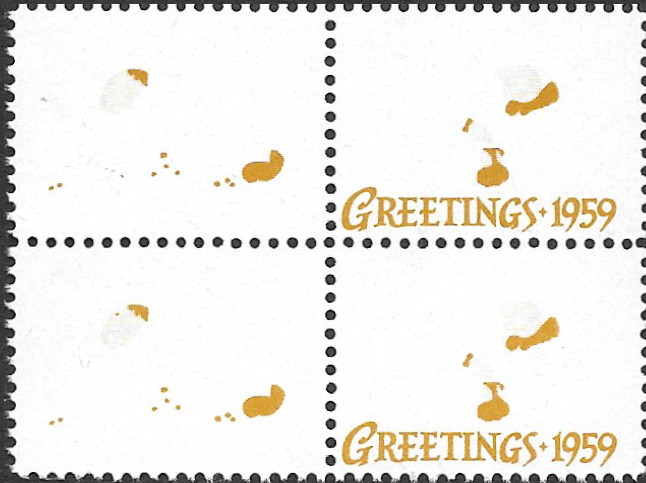 Gold ink applied in second run | 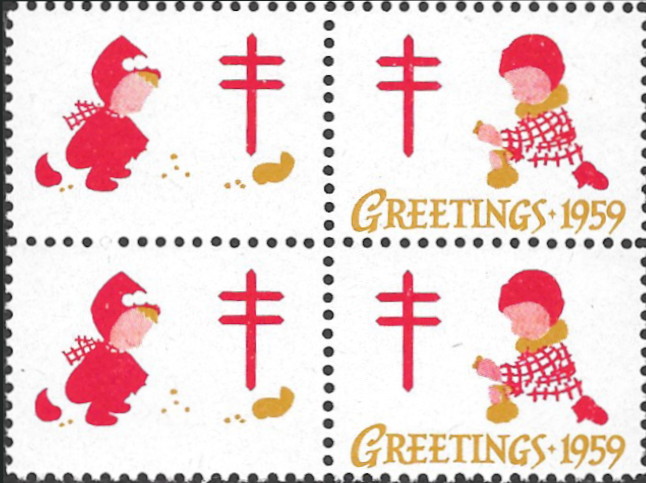 Red & Gold cumulative result |
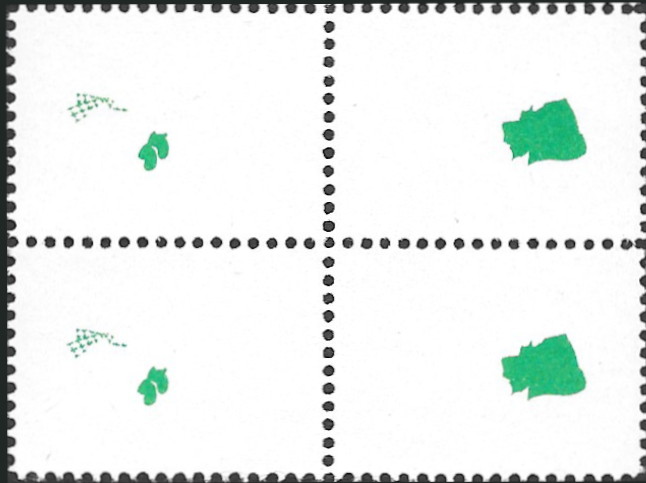 Green ink applied in third print run | 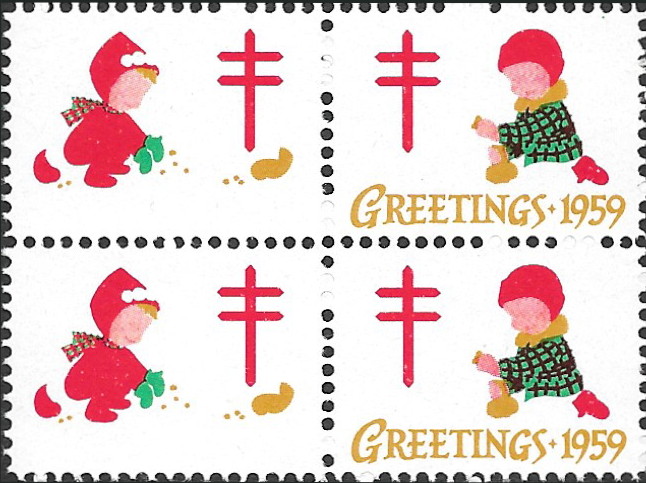 Red, gold and green cumulative combination |
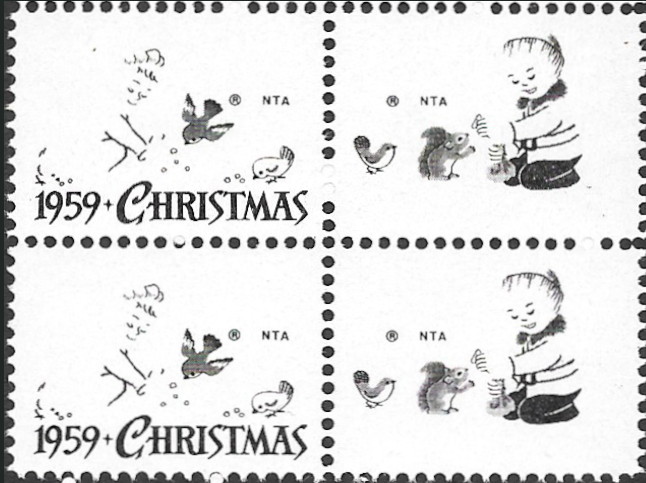 Black colour printed in final print run |  All layers combined to form finished product |
Note the detail and shading in the final black print layer. This gives depth and perspective to the final stamp. Many modern printing techniques still use 4 colour printing methods, though typically with CYMK inks (Cyan, Yellow, Magenta and Black).
The perforations would typically be punched out after the final colour has been applied (and printing of the whole sheet is therefore complete). A common printing error that is often seen on stamps is where one or more colors are misaligned. You can see from this multi-pass printing technique that even a slight misalignment of a sheet during a color run will result in a visible error occurring.
Some other printing errors are:
- One or more colours missing entirely
- A colour has been applied in the wrong shade
- A correct colour was used but it was applied to the wrong layer
- Inverted printing (where a whole page has been printed upside-down in the printing process)
- Printing has occurred on the wrong side of the page (it was printed on the back-side for example)
- Missing perforations (either wholly or partially) on a sheet
- Paper creases creating areas of no colour
- Issues with the die resulting in missing or additional ink
Many collectors focus on collecting error stamps, looking specifically for issues like those mentioned above. The right error stamps (or “freaks” as some refer to them) can fetch very high market prices due to their scarcity.
If you are looking for more information on Philippine errors then please take a look at my blog posts here.
